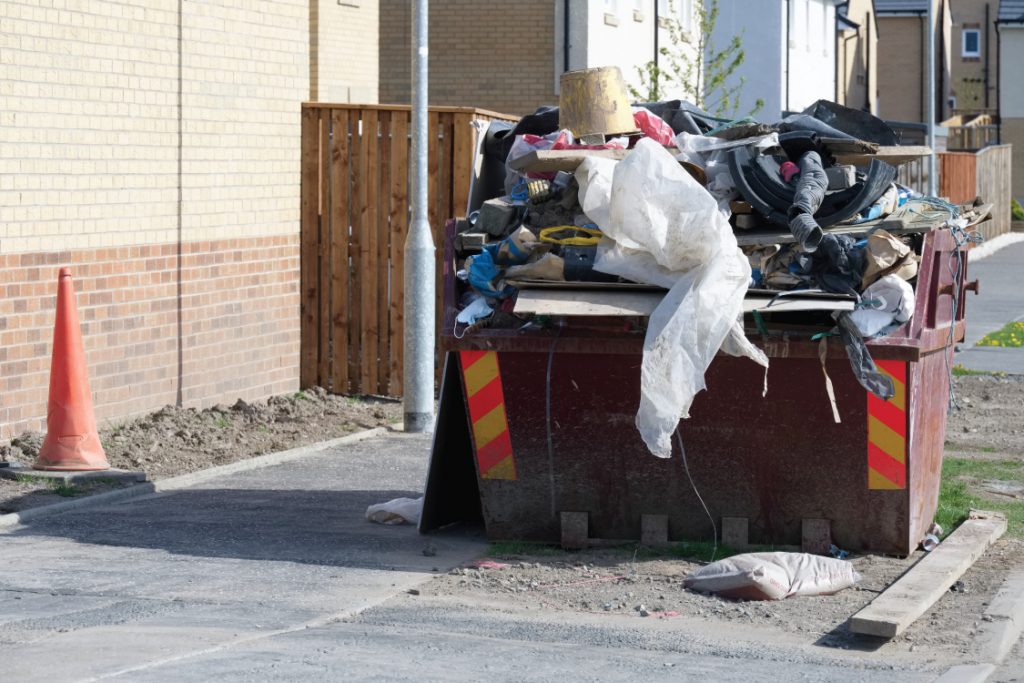Overloading a Skip: The Risks, Dangers and How to Avoid Them
When you hire a skip – whether it’s to get rid of unwanted belongings after a garage or loft clearance, soil and other green waste after a garden renovation, or bricks and rubble after more substantial home refurbishment – there are a number of things you need to think about.
This can include whether you’ve got somewhere to keep it, if you’re actually allowed to put what you want to get rid of into the skip, and what size skip you’re going to need.
This last point is crucial, because if you order one that’s far too big, you’ll end up paying more than you need to. However, ordering one that’s too small could be even worse, because then you may have to end up ordering a second one. One thing you must avoid, however, is overloading a skip.

When is a skip overloaded?
Most skips will have a thick red line on the inside near the top – this indicates how high you are allowed to go. If there is no line, then you need to make sure that nothing is protruding above the top of the skip walls.
What are the risks of overloading a skip?
Overloading a skip represents a potential health hazard to both the driver taking it away and members of the general public.
When a skip is transported from your site to the hire company’s depot or recycling centre, anything sticking out from the skip could catch on something or even fall out and hit someone or something. Or, if your skip is on the road and you have some of your waste overhanging or protruding from the top, a passing motorist or cyclist may not notice it, potentially causing serious injury.
On top of all that, it is also illegal to overfill a skip.
When the company you have hired your skip from comes to collect it, they will carefully check to see how it has been filled. If, in their opinion, it is unsafe to transport as it is, they will refuse to take it away, in which case you may have to remove some items to make it safe or even hire a second skip.
How to avoid overloading a skip
The simple – if somewhat unhelpful – answer is to make sure you get one that’s big enough. However, it’s not always easy judging how a lot of waste spread out in your garden is going to transfer into a metal container.
There is a rule of thumb which should help when making your decision: skips are measured in yards, and if you multiply the yardage of a skip by 10, that’s approximately how many filled black bin bags it will hold. So, if you order an 8 yard skip, it will hold roughly 80 filled black bin bags. Your skip hire company should be able to advise you, if you can give them a good idea of the sort of waste you’re going to want to dispose of.
The other thing you should do is take some care when filling your skip – don’t just throw things in haphazardly, try to be mindful of making best use of the limited space that you have. Breaking down larger items will also help you fit more in, and use small waste to fill in any voids that are created.
Put light objects at the bottom and heavy items on top – the heavy items should crush the lighter items down to create more space. Flat objects, such as doors, can go on top of the lighter objects at the bottom or flat along the side of the skip.
For the best advice on all matters to do with waste management, skips and skip hire, talk to the friendly team at CSH Environmental. We have a wide range of skip sizes available, ideal for everything from a simple shed or garage clearance to major building work, so contact us today.
back to latest news